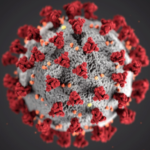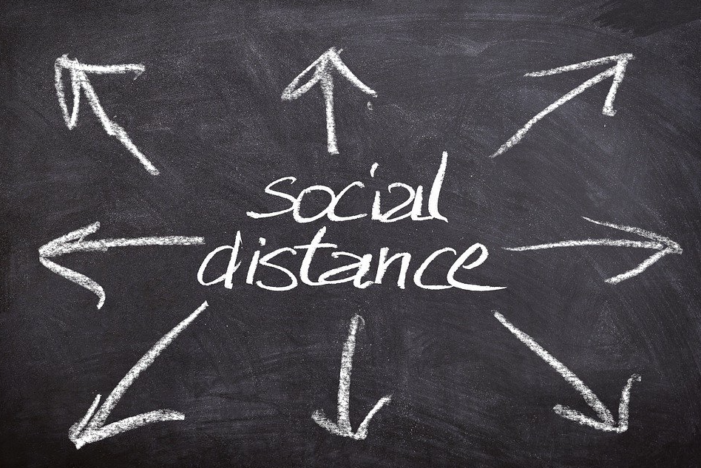The cases of COVID19 infections continue to rise in Florida and Miami-Dade as the coronavirus is, reportedly, just getting started here. These dramatic increases are a result of more massive testing and are going to continue for the next couple of weeks, or  months, depending on the expert. Either way, it ain’t over yet, folks.
months, depending on the expert. Either way, it ain’t over yet, folks.
Not even close.
And while people might be thinking that our social distancing — on Wednesday, Day 10 — isn’t working, everyone needs to know that it only works with time. So, no, Caro, you don’t have to go out to Publix right now just to get away from abuela for a couple of hours. Go to the backyard with your phone and order from Instacart or Amazon Fresh.
Ladra is sharing this important perspective from Jonathan Smith, an award-winning lecturer in Epidemiology of Microbial Diseases and Global Health at Yale University School of Public Health. His research focuses on infectious disease transmission dynamics and he is an affiliate of the Yale Global Health Leadership Institute and founding director of Visual Epidemiology, a non-profit organization seeking to combine academic discourse with personal narratives through filmmaking.
In other words, he knows what he is talking about. He is not a politician or a talking head on TV. He is a scientist.
A Short Explanation by Jonathan Smith, Yale University
Hey everybody, as an infectious disease epidemiologist (although a lowly one), at this point I feel morally obligated to provide some information on what we are seeing from a transmission dynamic perspective and how they apply to the social distancing measures. Like any good scientist I have noticed two things that are either not articulated or not present in the “literature” of social media.
Specifically, I want to make two aspects of these measures very clear and unambiguous.
First, we are in the very infancy of this epidemic’s trajectory. That means even with these measures we will see cases and deaths continue to rise globally, nationally, and in our own communities in the coming weeks.
Our hospitals will be overwhelmed, and people will die that didn’t have to. This may lead some people to think that the social distancing measures are not working. They are. They may feel futile. They aren’t. You will feel discouraged. You should. This is normal in chaos. This enemy that we are facing is very good at what it does; we are not failing. We need everyone to hold the line as the epidemic inevitably gets worse. This is not my opinion; this is the unforgiving math of epidemics for which I and my colleagues have dedicated our lives to understanding with great nuance, and this disease is no exception. We know what will happen; I want to help the community brace for this impact. Stay strong and with solidarity knowing with absolute certainty that what you are doing is saving lives, even as people begin getting sick and dying around you. You may feel like giving in. Don’t.
Second, although social distancing measures have been (at least temporarily) well-received, there is an obvious-but-overlooked phenomenon when considering groups (i.e. families) in transmission dynamics. While social distancing decreases contact with members of society, it of course increases your contacts with group (i.e. family) members. This small and obvious fact has surprisingly profound implications on disease transmission dynamics. Study after study demonstrates that even if there is only a little bit of connection between groups (i.e. social dinners, playdates/playgrounds, etc.), the epidemic trajectory isn’t much different than if there was no measure in place. The same underlying fundamentals of disease transmission apply, and the result is that the community is left with all of the social and economic disruption but very little public health benefit. You should perceive your entire family to function as a single individual unit; if one person puts themselves at risk, everyone in the unit is at risk. Seemingly small social chains get large and complex with alarming speed. If your son visits his girlfriend, and you later sneak over for coffee with a neighbor, your neighbor is now connected to the infected office worker that your son’s girlfriend’s mother shook hands with. This sounds silly, it’s not. This is not a joke or a hypothetical. We as epidemiologists see it borne out in the data time and time again and no one listens. Conversely, any break in that chain breaks disease transmission along that chain.
In contrast to hand-washing and other personal measures, social distancing measures are not about individuals, they
are about societies working in unison. These measures also take a long time to see the results. It is hard (even for me) to conceptualize how ‘one quick little get together’ can undermine the entire framework of a public health intervention, but it does. I promise you it does. I promise. I promise. I promise. You can’t cheat it. People are already itching to cheat on the social distancing precautions just a “little”- a playdate, a haircut, or picking up a needless item at the store, etc. From a transmission dynamics standpoint, this very quickly recreates a highly connected social network that undermines all of the work the community has done so far.
Until we get a viable vaccine, this unprecedented outbreak will not be overcome in a grand, sweeping gesture, rather only by the collection of individual choices our community makes in the coming months. This virus is unforgiving to unwise choices. My goal in writing this is to prevent communities from getting ‘sucker-punched’ by what the epidemiological community knows will happen in the coming weeks. It will be easy to be drawn to the idea that what we are doing isn’t working and become paralyzed by fear, or to ‘cheat’ a little bit in the coming weeks. By knowing what to expect, and knowing the importance of maintaining these measures, my hope is to encourage continued community spirit, strategizing, and action to persevere in this time of uncertainty.
Um, yeah. Sobering.
So while the governor of Texas might be willing to die to save the economy for his grandchildren, and wants other grandpas to follow along, this disease can still get the best of us. We are in its very infancy. Experts say Greater Miami is a couple of weeks behind New York City, which is a couple of weeks behind Italy, were 743 people just died in one day.
We need to listen to the scientists this time. This is not a drill. This is not a dress rehearsal.
This is our future.

